Author: Biteye Core Contributor @lviswang
Editor: Biteye Core Contributor Denise
01. Market Overview: dTAO Upgrade Triggers Ecological Explosion
On February 13, 2025, the Bittensor network welcomed the historic Dynamic TAO (dTAO) upgrade, a transformation that shifted the network from a centralized governance model to a market-driven decentralized resource allocation. After the upgrade, each subnet has its own independent alpha token, allowing TAO holders to freely choose their investment targets, truly realizing a market-oriented value discovery mechanism.
Data shows that the dTAO upgrade has unleashed tremendous innovative vitality. In just a few months, Bittensor grew from 32 subnets to 118 active subnets, an increase of 269%. These subnets cover various segments of the AI industry, from basic text reasoning and image generation to cutting-edge protein folding and quantitative trading, forming the most complete decentralized AI ecosystem to date.
Market performance is equally impressive. The total market capitalization of top subnets increased from $4 million before the upgrade to $690 million, with staking annualized returns stabilizing between 16-19%. Each subnet allocates network incentives based on market-driven TAO staking rates, with the top 10 subnets accounting for 51.76% of network emissions, reflecting a survival of the fittest market mechanism.
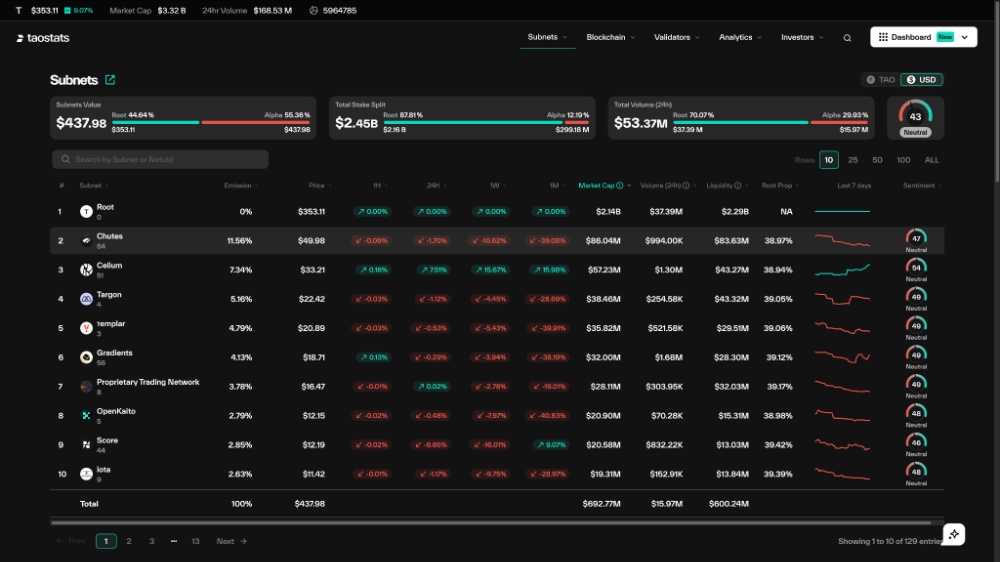
https://taostats.io/subnets
02. Core Network Analysis (Top 10 by Emission)
1. @chutes_ai, Chutes (SN64) - Serverless AI Computing
Core Value: Revolutionizing AI model deployment experience, significantly reducing computing costs
Chutes adopts an "instant start" architecture, compressing AI model startup time to 200 milliseconds, achieving 10 times the efficiency compared to traditional cloud services. With over 8,000 GPU nodes globally, it supports mainstream models from DeepSeek R1 to GPT-4, processing over 5 million requests daily, with response latency controlled within 50 milliseconds.
The business model is mature, employing a freemium strategy to attract users. Through the OpenRouter platform integration, Chutes provides computing power support for popular models like DeepSeek V3, generating revenue from each API call. The cost advantage is significant, 85% lower than AWS Lambda. Currently, total token usage exceeds 9042.37B, serving over 3,000 enterprise clients.
Within 9 weeks of the dTAO launch, it reached a market capitalization of $100 million, currently valued at $79M, with a strong technological moat and smooth commercialization progress, enjoying high market recognition, making it a leader among subnets.
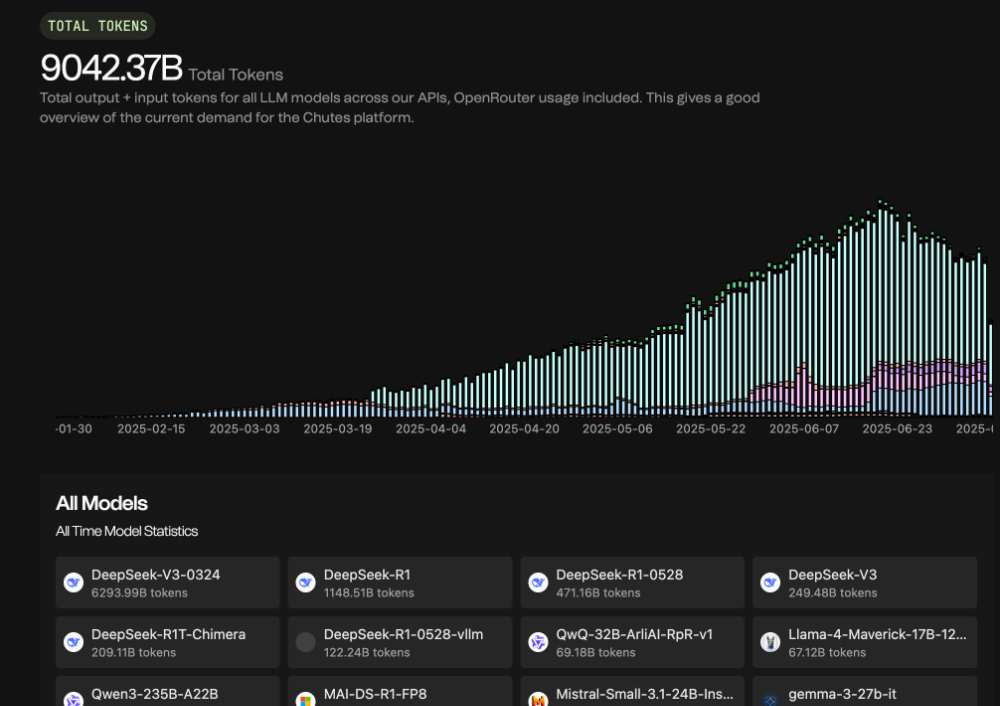
https://chutes.ai/app/research
2. @celiumcompute, Celium (SN51) - Hardware Computing Optimization
Core Value: Underlying hardware optimization, enhancing AI computing efficiency
Developed by Datura AI, focusing on computing optimization at the hardware level. Through four major technology modules: GPU scheduling, hardware abstraction, performance optimization, and energy efficiency management, it maximizes hardware utilization. It supports the full range of hardware including NVIDIA A100/H100, AMD MI200, and Intel Xe, with prices 90% lower than similar products and a 45% increase in computing efficiency.
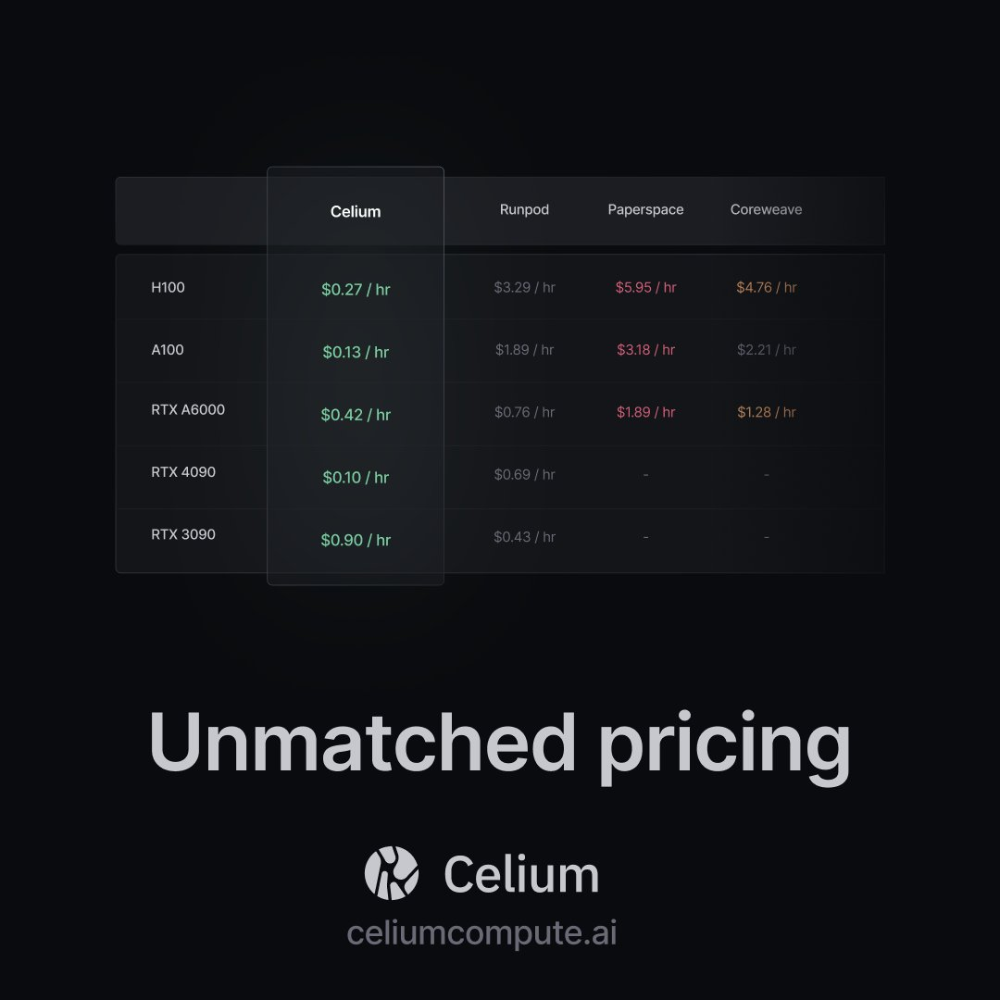
https://celiumcompute.ai/
Currently, Celium is the second-largest subnet by emissions on Bittensor, accounting for 7.28% of network emissions. Hardware optimization is a core aspect of AI infrastructure, with strong price increase trends due to technological barriers, currently valued at $56M.
3. @TargonCompute, Targon (SN4) - Decentralized AI Inference Platform
Core Value: Confidential computing technology, ensuring data privacy and security
At the core of Targon is the TVM (Targon Virtual Machine), a secure confidential computing platform that supports AI model training, inference, and validation. TVM employs confidential computing technologies like Intel TDX and NVIDIA confidential computing to ensure the security and privacy of the entire AI workflow. The system supports end-to-end encryption from hardware to application layers, allowing users to utilize powerful AI services without disclosing data.
Targon has a high technical threshold and a clear business model with stable revenue sources. It has initiated a revenue buyback mechanism, using all income for token buybacks, with the most recent buyback amounting to $18,000.
4. @tplr_ai, τemplar (SN3) - AI Research and Distributed Training
Core Value: Large-scale collaborative training of AI models, lowering training barriers
Templar is a pioneering subnet on the Bittensor network dedicated to large-scale distributed training of AI models, with the mission to become "the best model training platform in the world." It conducts collaborative training using GPU resources contributed by global participants, focusing on cutting-edge model collaborative training and innovation, emphasizing anti-cheating and efficient collaboration.
In terms of technical achievements, Templar has successfully completed the training of a 1.2B parameter model, undergoing over 20,000 training cycles with about 200 GPUs participating in the entire process. In 2024, it will upgrade the commit-reveal mechanism to enhance decentralization and security of validation; in 2025, it will continue to advance large model training, reaching parameter scales of 70B+, performing comparably to industry standards in standard AI benchmark tests, and receiving personal recommendations from Bittensor founder Const.
Templar's technical advantages are prominent, currently valued at $35M, accounting for 4.79% of emissions.
5. @gradients_ai, Gradients (SN56) - Decentralized AI Training
Core Value: Democratizing AI training, significantly lowering cost barriers
Also developed by Rayon Labs, it addresses the cost pain points of AI training through distributed training. The intelligent scheduling system is based on gradient synchronization, efficiently allocating tasks to thousands of GPUs. It has completed training for a 118 trillion parameter model, costing only $5 per hour, 70% cheaper than traditional cloud services, and training speed is 40% faster than centralized solutions. The one-click interface lowers the usage barrier, with over 500 projects for model fine-tuning across fields like healthcare, finance, and education.
Currently valued at $30M, with high market demand and clear technological advantages, it is one of the subnets worth long-term attention.
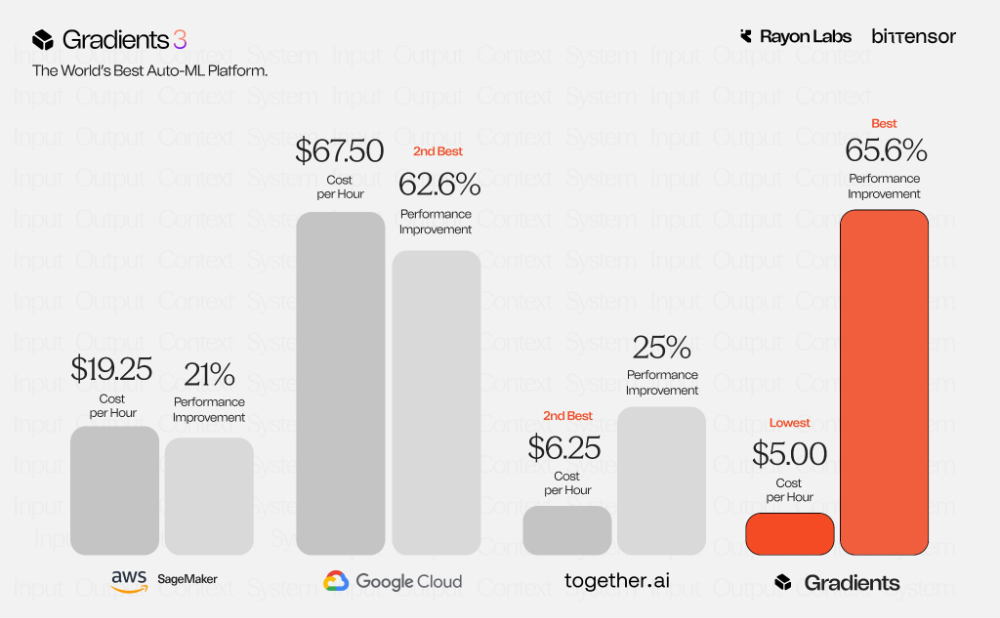
https://x.com/rayonlabs/status/1911932682004496800_
6. @taoshiio, Proprietary Trading (SN8) - Financial Quantitative Trading
Core Value: AI-driven multi-asset trading signals and financial predictions
SN8 is a decentralized quantitative trading and financial prediction platform, driven by AI multi-asset trading signals. The proprietary trading network applies machine learning techniques to financial market predictions, constructing a multi-layered predictive model architecture. Its time series prediction model integrates LSTM and Transformer technologies, capable of handling complex time series data. The market sentiment analysis module provides sentiment indicators as auxiliary signals for predictions by analyzing social media and news content.
The website showcases the returns and backtesting of different miners' strategies. SN8 combines AI and blockchain to offer innovative trading methods in financial markets, currently valued at $27M.
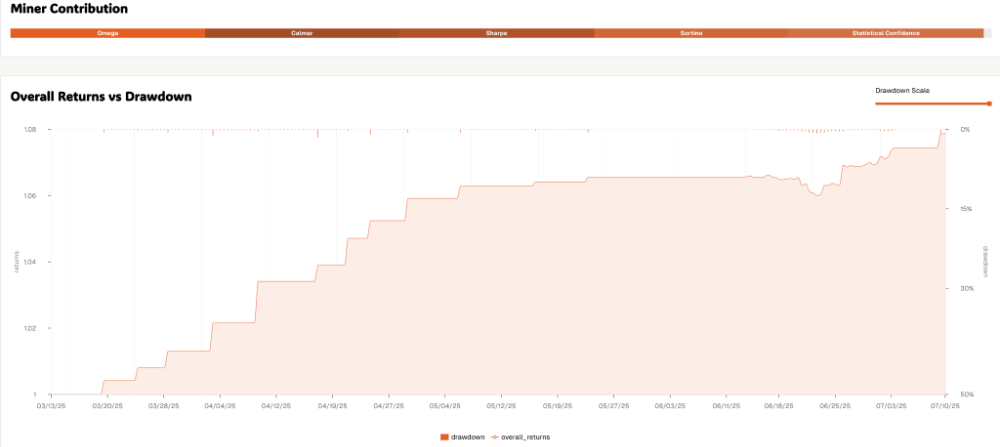
https://dashboard.taoshi.io/miner/5Fhhc5Uex4XFiY7V3yndpjsPnfKp9F4EhrzWJg7cY6sWhYGS
7. @_scorevision, Score (SN44) - Sports Analysis and Evaluation
Core Value: Sports video analysis, targeting the $600 billion soccer industry
Focusing on sports video analysis, this computer vision framework reduces the cost of complex video analysis through lightweight verification technology. It employs a two-step verification process: field detection and CLIP-based object inspection, reducing traditional single-match annotation costs from thousands of dollars to 1/10 to 1/100. In collaboration with Data Universe, DKING AI agents have achieved an average prediction accuracy of 70%, with a peak daily accuracy of 100%.
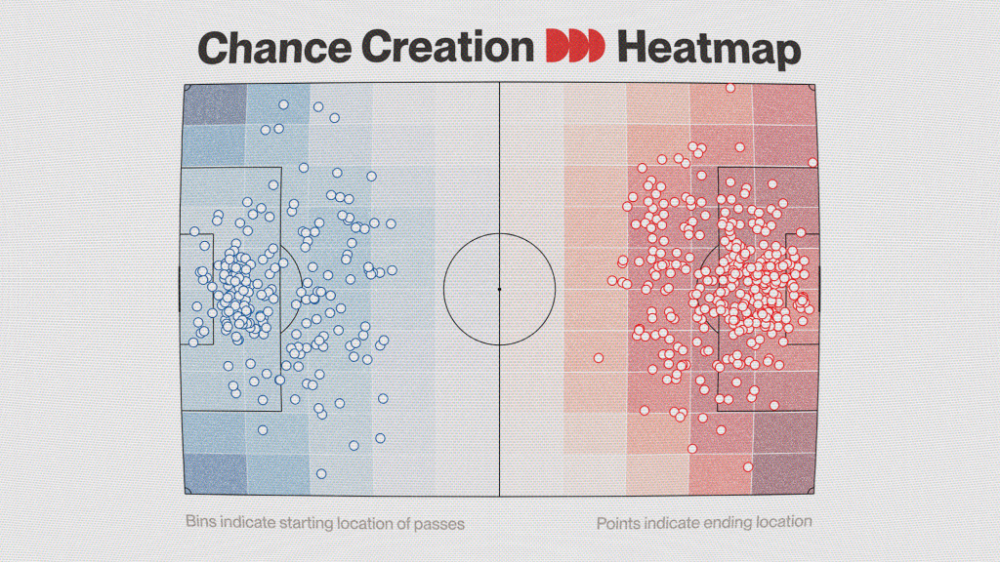
https://x.com/webuildscore/status/1942893100516401598
The sports industry is vast, with significant technological innovation and broad market prospects. Score is a subnet with a clear application direction, worthy of attention.
8. @openkaito, OpenKaito (SN5) - Open Source Text Reasoning
Core Value: Development of text embedding models, optimizing information retrieval
OpenKaito focuses on the development of text embedding models, supported by Kaito, an important player in the InfoFi field. As a community-driven open-source project, OpenKaito is dedicated to building high-quality text understanding and reasoning capabilities, particularly in information retrieval and semantic search.
This subnet is still in the early construction phase, primarily building an ecosystem around text embedding models. Notably, the upcoming Yaps integration may significantly expand its application scenarios and user base.
9. @MacrocosmosAI, Data Universe (SN13) - AI Data Infrastructure
Core Value: Large-scale data processing, AI training data supply
Processing 500 million rows of data daily, with a cumulative total of over 55.6 billion rows, supporting 100GB of storage. The DataEntity architecture provides core functions such as data standardization, index optimization, and distributed storage. The innovative "gravity" voting mechanism achieves dynamic weight adjustment.
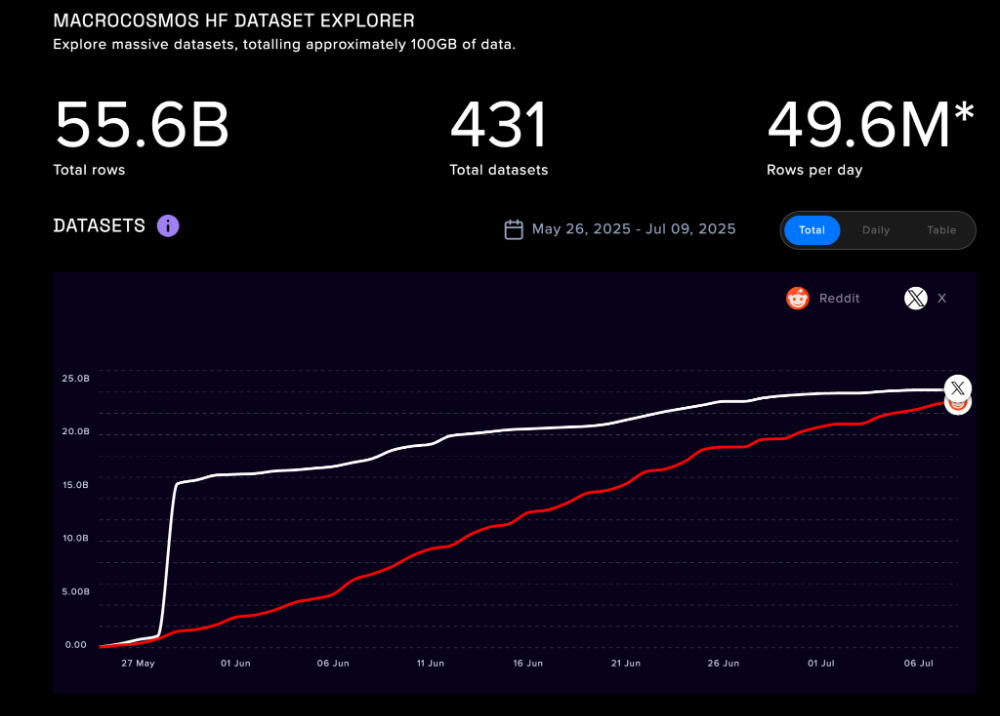
https://www.macrocosmos.ai/sn13/dashboard
Data is the oil of AI, with stable infrastructure value and significant ecological niche. As a data supplier for multiple subnets, it collaborates deeply with projects like Score, reflecting the value of infrastructure.
10. @taohash, TAOHash (SN14) - PoW Computing Power Mining
Core Value: Connecting traditional mining with AI computing, integrating computing resources
TAOHash allows Bitcoin miners to redirect their computing power to the Bittensor network, earning alpha tokens through mining for staking or trading. This model combines traditional PoW mining with AI computing, providing miners with a new source of income.
In just a few weeks, it attracted over 6EH/s of computing power (approximately 0.7% of global computing power), demonstrating market recognition of this hybrid model. Miners can choose between traditional Bitcoin mining and earning TAOHash tokens, optimizing returns based on market conditions.
11. @CreatorBid, Creator.Bid - Launch Platform for AI Agent Ecosystem
Although Creator.Bid is not a subnet, it plays an important coordinating role in the Bittensor ecosystem. The Creator.Bid ecosystem is built on three main pillars. The Launchpad module provides fair and transparent AI agent launch services, offering a secure and transparent starting point for new AI agents through anti-sniping fair launch smart contracts and curated launch mechanisms. The Tokenomics module unifies the entire ecosystem with the BID token, providing agents with a sustainable revenue model. The Hub module offers powerful API-driven services, including content automation, social media APIs, and fine-tuned image models.
The core innovation of the platform lies in the concept of Agent Keys. These digital membership tokens enable creators to build communities around AI agents and achieve shared ownership. Each AI agent obtains a unique identity through the Agent Name Service (ANS), realized in NFT form, ensuring that each agent has a non-reproducible identifier. Users can input personality traits through simple prompts, generating fully functional AI agents without programming knowledge.
While Creator.Bid itself is built on the Base network, it has established a deep collaborative relationship with the Bittensor ecosystem. By operating the TAO Council, Creator.Bid brings together top subnets like BitMind (SN34) and Dippy (SN11 & SN58), becoming the "coordinating layer for TAO-aligned agents, subnets, and builders."
The value of this collaborative relationship lies in integrating the strengths of different networks. Bittensor provides powerful AI inference and training capabilities, while Creator.Bid offers a user-friendly agent creation and launch platform. The combination of the two ecosystems allows developers to leverage Bittensor's AI capabilities to create agents, which can then be tokenized and community-driven through Creator.Bid's Launchpad.
Collaboration with Masa's AI Agent Arena (SN59) further exemplifies this synergy. Creator.Bid provides agent creation tools for the arena, enabling users to quickly deploy AI agents to compete. This cross-ecosystem collaboration model is becoming an important trend in the decentralized AI field.
03. Ecosystem Analysis
Core Advantages of Technical Architecture
Bittensor's technological innovation has built a unique decentralized AI ecosystem. Its Yuma consensus algorithm ensures network quality through decentralized validation, while the market-driven resource allocation mechanism introduced by the dTAO upgrade significantly enhances efficiency. Each subnet is equipped with an AMM mechanism to achieve price discovery between TAO and alpha tokens, allowing market forces to directly participate in the allocation of AI resources.
The collaboration protocols between subnets support the distributed processing of complex AI tasks, forming a powerful network effect. The dual incentive structure (TAO emissions plus alpha token appreciation) ensures long-term participation motivation, with subnet creators, miners, validators, and stakers all receiving corresponding rewards, forming a sustainable economic loop.
Competitive Advantages and Challenges Faced
Compared to traditional centralized AI service providers, Bittensor offers a true decentralized alternative, excelling in cost efficiency. Multiple subnets demonstrate significant cost advantages, such as Chutes being 85% cheaper than AWS, with this cost advantage stemming from the efficiency improvements of the decentralized architecture. The open ecosystem promotes rapid innovation, with the number and quality of subnets continuously improving, and the pace of innovation far exceeding that of traditional in-house R&D.
However, the ecosystem also faces real challenges. The technical threshold remains high; although tools are continuously improving, participating in mining and validation still requires considerable technical knowledge. The uncertainty of the regulatory environment is another risk factor, as decentralized AI networks may face varying regulatory policies in different countries. Traditional cloud service providers like AWS and Google Cloud will not sit idly by and are expected to launch competitive products. As the network scales, maintaining a balance between performance and decentralization will also become a significant test.
The explosive growth of the AI industry presents Bittensor with enormous market opportunities. Goldman Sachs predicts that global AI investment will approach $200 billion by 2025, providing strong support for infrastructure demand. The global AI market is expected to grow from $294 billion in 2025 to $1.77 trillion by 2032, with a compound annual growth rate of 29%, creating vast development space for decentralized AI infrastructure.
Supportive policies for AI development in various countries create opportunity windows for decentralized AI infrastructure, while increasing attention to data privacy and AI security has heightened demand for technologies like confidential computing, which is a core advantage of subnets like Targon. Institutional investors' interest in AI infrastructure continues to rise, with participation from well-known institutions like DCG and Polychain providing funding and resource support for the ecosystem.
04. Investment Strategy Framework
Investing in Bittensor subnets requires establishing a systematic evaluation framework. On the technical level, it is necessary to examine the degree of innovation and depth of the moat, the technical strength and execution capability of the team, and the synergy with other projects in the ecosystem. On the market level, it is essential to analyze the target market size and growth potential, competitive landscape and differentiation advantages, user adoption and network effects, as well as regulatory environment and policy risks. On the financial level, attention should be paid to current valuation levels and historical performance, the proportion of TAO emissions and growth trends, the rationality of token economics design, and liquidity and trading depth.
In terms of specific risk management, diversification of investments is a fundamental strategy. It is recommended to diversify allocations among different types of subnets, including infrastructure types (such as Chutes, Celium), application types (such as Score, BitMind), and protocol types (such as Targon, Templar). Investment strategies should also be adjusted based on the development stage of the subnets; early-stage projects carry higher risks but offer greater potential returns, while mature projects are relatively stable but have limited growth space. Considering that the liquidity of alpha tokens may not be as high as that of TAO, it is necessary to reasonably arrange the proportion of capital allocation to maintain a necessary liquidity buffer.
The first halving event in November 2025 will become an important market catalyst. The reduction in emissions will increase the scarcity of existing subnets while potentially eliminating underperforming projects, reshaping the economic landscape of the entire network. Investors can position themselves in quality subnets in advance to seize the allocation window before the halving.
In the medium term, the number of subnets is expected to exceed 500, covering various segments of the AI industry. The increase in enterprise-level applications will drive the development of subnets related to confidential computing and data privacy, with cross-subnet collaboration becoming more frequent, forming a complex AI service supply chain. The gradual clarification of the regulatory framework will give compliant subnets a significant advantage.
In the long term, Bittensor is expected to become an important component of global AI infrastructure, with traditional AI companies likely adopting hybrid models, migrating some of their operations to decentralized networks. New business models and application scenarios will continue to emerge, with enhanced interoperability with other blockchain networks, ultimately forming a larger decentralized ecosystem. This development path is similar to the evolution of early internet infrastructure, where those who can seize key nodes will reap substantial rewards.
05. Conclusion
The Bittensor ecosystem represents a new paradigm in the development of AI infrastructure. Through market-driven resource allocation and decentralized governance mechanisms, it provides new soil for AI innovation, showcasing remarkable innovative vitality and growth potential. Against the backdrop of rapid development in the AI industry, Bittensor and its subnet ecosystem deserve continued attention and in-depth research.
免责声明:本文章仅代表作者个人观点,不代表本平台的立场和观点。本文章仅供信息分享,不构成对任何人的任何投资建议。用户与作者之间的任何争议,与本平台无关。如网页中刊载的文章或图片涉及侵权,请提供相关的权利证明和身份证明发送邮件到support@aicoin.com,本平台相关工作人员将会进行核查。




